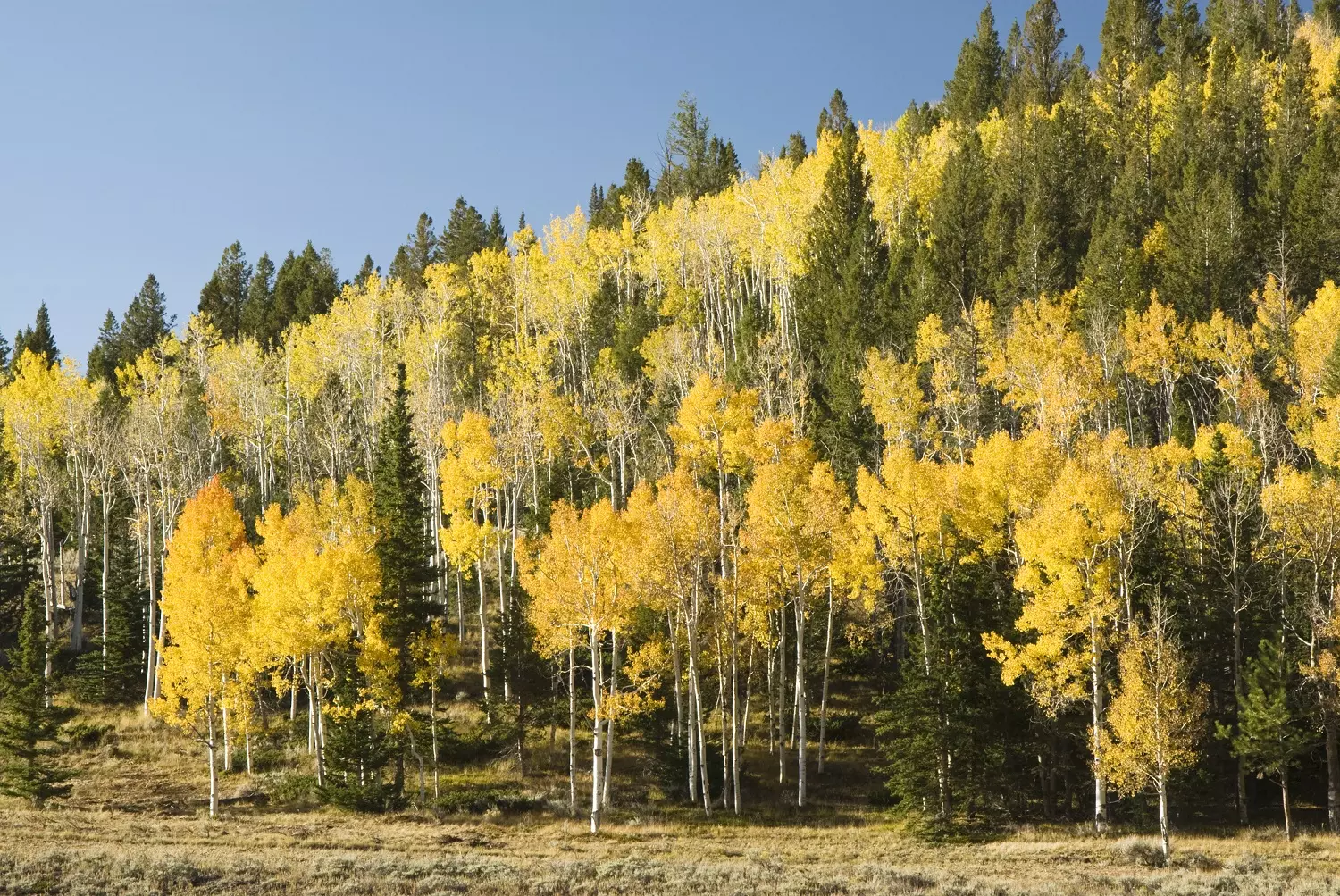[Originally published as Clonal Plant Colonies]
Clonal growth is not something people think of when they think of plant growth. However, plant reproduction takes place both sexually and asexually.
When plants reproduce asexually, they produce offspring that are clones of themselves. Sometimes, these clones will also produce clones. In rare cases, some of these individuals will cluster together into large clonal colonies. There are a couple well-known examples of this, mostly in trees, though other plants have been known to do it as well. These clonal colonies are sometimes represented as being many thousands, or occasionally, millions of years old.
However, there is more here than meets the eye.
A clonal colony is something most of us don’t think about when we view a grove of trees or a large cluster of plants. We tend to view each plant as its own separate individual, growing from its own separate root system, and genetically distinct from its neighbors.
This is simply not true.
Many times, clumps of plants are clonal. Some of these are quite small, measuring only a few feet. Others are yards or even acres across. Many times invasive species, such as the common reed, spread in a colonial manner. Many other perennials spread in this fashion as well. However, most clonal colonies remain very small. Only a rare few grow to the super-clonal colonies most often talked about when the topic comes up.
The most well known of these super-clonal colonies is Pando
Pando is a huge cluster of male quaking aspens residing in an area that is around 106 acres. Pando is assumed to be all the same organism based on genetic testing. It is believed there is a massive underground root system connecting the plants, though, understandably, the ground has not been dug up to verify this assumption.
Clonal colonies of aspens are very common, but most do not reach anywhere near the size of Pando. Scientists date Pando to be between 80,000 and one million years old. Other supposedly ancient clonal colonies include an underwater sea grass patch in the Mediterranean and a patch of shrubs in Tasmania.
Obviously, the thing that most likely jumped out at creationists upon reading the preceding paragraph is the proposed age of Pando and other ancient clonal colonies.
Since Pando is the most well-known and presumably the oldest of the clonal colonies, we will look at how it is dated to see what is going on:
Tree ring dating is not used
The reason tree rings are not used is that not all members of the colony are the same age. Further, to determine the exact age of the colony, rings would need to be counted on the original tree, which may not even still be standing today. Thus scientists must use other methods to determine the age of these colonies.
In Pando’s case, the dating gets kind of complicated because it starts to take into account other models.
According to the evolutionary assumptions, aspens stopped increasing in the area of the United States where Pando is found around ten thousand years ago. Thus Pando cannot be younger than that.
Also, based on individuals in the colony’s mutational divergence from one another—assuming a particular rate of mutation—an age can be estimated. That, combined with the known growth-rate depression aspens exhibit at the higher altitude Pando lives at allows them to calculate an age.
There are a couple of assumptions in play in dating Pando
- They are first assuming their climate models are accurate. Given the horrible track record of most climate models in the present, this assumption is at least questionable.
- Further, it assumes that aspen growth rates were faster in the past. This may or may not be true, and likely varied throughout history.
- Further, they are assuming a constant rate of mutation in the aspen colony, which, given we know that the environment can induce mutations and even affect mutation rates in some cases, is probably a questionable assumption.
Since there are numerous assumptions involved here—none of which are airtight—the exact age of Pando remains a mystery. Other ancient clonal colonies involve similar assumptions and thus have similar issues.
Biblical Assumptions
Applying a biblical filter to Pando and other ancient clonal colonies reveals a different story. Because the global flood about 4,300 years ago wiped out the surface of the earth and all the air-breathing land animals, we know Pando cannot be older than that. Most likely it, and other ancient clonal colonies sprang up in the months and years just after the flood. So they are old, just not as old as the secularists would like them to be.







